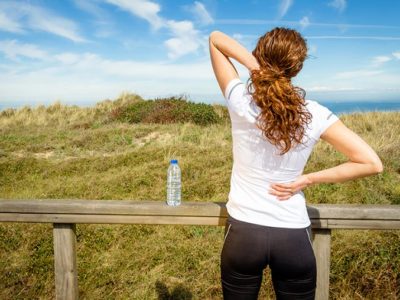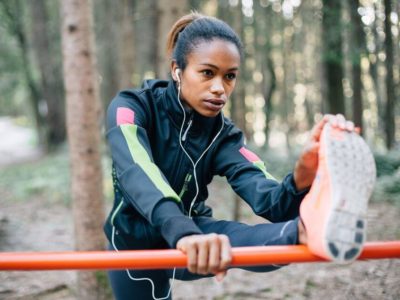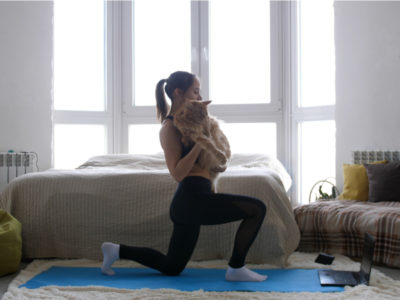Table of Contents[Hide][Show]
The modern world seems determined to put you on your backside. Our ancestors worked in physically demanding farms and factories, but modern technology has taken away that physical strain. We’ve swapped standing for sitting, which is a serious problem for the three muscles that make up your buttocks. Sitting doesn’t require any engagement from your derriere. The average American sits anywhere from 8–15 hours a day. Combine that with the time spent sleeping, and you could have disengaged gluteal muscles for nearly 20 hours a day.
A flattened backside is aesthetically undesirable, but the advantages of having firm glutes go well beyond looks. A strong backside can help prevent injuries, straighten posture, and improve your athletic performance. Below are four reasons to prioritize glute strength and exercises to help you get started.
1. Strong Glutes Ease Lower Back Pain
Hunching over a computer has a price. We pay that price in lower back pain. Lumbar pain can range from being unpleasant to downright debilitating. Lower back pain was recently reported to be the greatest cause of disability in the world. The good news? You can ease your pain by strengthening your glutes.
A 2010 study of 150 subjects with chronic lower back pain confirmed that the strongest contributor to pain was gluteus medius weakness. The gluteus medius, or “hip abductor” muscle, is what ensures you have a steady stride. Too much sitting causes this muscles to become underdeveloped, limiting your range of motion. Limited range of motion may cause falls down the line. Strengthening the gluteus medius takes the strain off your back and puts it where it belongs—among the strongest group of muscles in your body.
Clamshells with or without a resistance band and lateral band walking are two great ways to strengthen your gluteus medius.
You can also try hip-lift progression to relieve your lower back pain while strengthening your glutes. Your back will thank you.
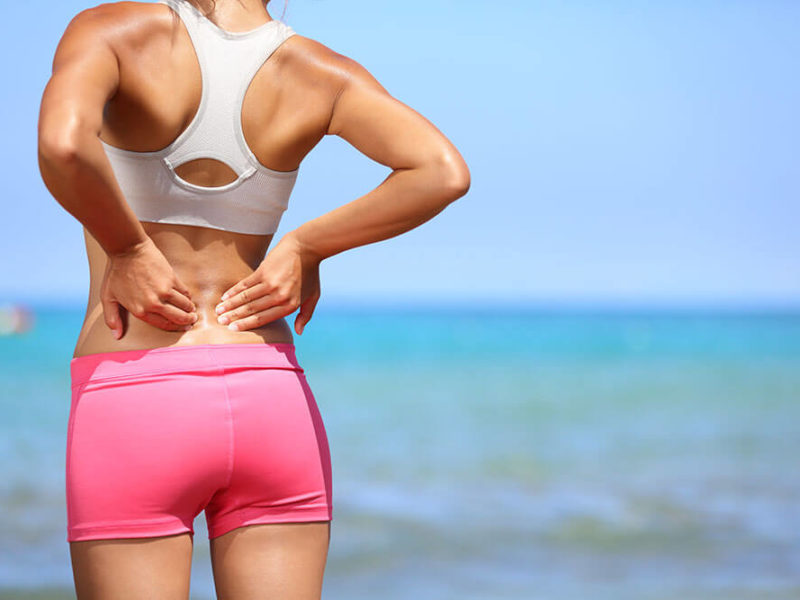
2. Strong Glutes Help Prevent Lower Body Injury
You’ve heard running on hard surfaces is bad for your knees, but weak glutes don’t help your knees either. Glute strength plays a large role in the cause and prevention of Patellofemoral pain syndrome (PFPS) or “runner’s knee.”
According to a 2014 study published in Clinical Biomechanics, decreased gluteus maximus strength was directly tied to increased knee displacement. Weak glutes were also linked to iliotibial (IT) band friction syndrome, anterior cruciate ligament (ACL) sprains, and chronic ankle instability. Strengthening those glutes may be your greatest defense against lower extremity injuries.
Squats, one-legged squats, and lunges are a well-known way to build strength in your gluteus maximus. Try step-ups using a step high enough to create a 90-degree angle in your knee joint. Once you’ve assured proper form, you can incorporate resistance bands or weights to really make your glutes work.
Related
10 Natural Remedies for Back Pain
Imagine not being able to sit up straight at work. Or imagine the guilt of having to let your kids down because your back pain is wrecking havoc on your ability to play with them. But don’t feel too guilty. Back pain is one of the most common health problems in the nation, more so …
3. Strong Glutes Improve Posture
Yet another unfortunate consequence of desk jobs is poor posture, but before cursing your computer take a long look at your behind. Weak glutes from prolonged sitting hurt your stability and affect your ability to maintain a strong gait. This causes common postural deviations, such as swayback, to develop unless you take action.
Two studies were conducted with anatomical models of individuals with spinal cord injuries. They confirmed that stimulating certain muscles, including the gluteus maximus, allowed individuals with spinal cord injuries to assume more than 50% of the sitting postures of able-bodied individuals. Meaning, strengthening your glutes just may be the best way to straighten your posture.
The bridge and the squat with kick-back are both great ways to activate your entire glute. Try the pelvic hike or hip hike to both strengthen your glutes and test your balance. Don’t forget to maintain proper form every time.
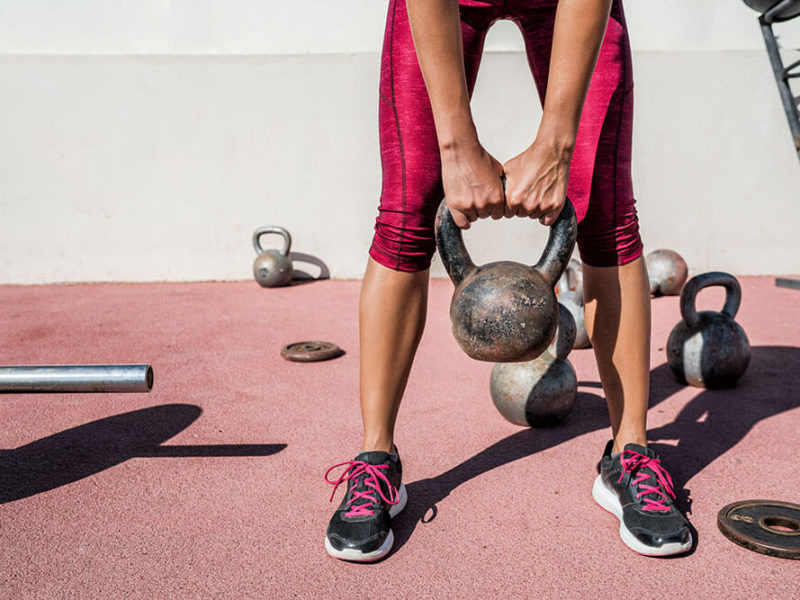
4. Strong Glutes Improve Athletic Performance
And, finally, a strong backside helps with overall athletic performance. A couple of experiments published in a 2014 issue of the American Journal of Physical Anthropology, researchers found the gluteus maximus is highly active in a range of athletic activities. Running, sprinting, climbing, and throwing all called on the gluteus maximus to get involved.
As researchers concluded, “It appears that the human gluteus maximus is akin to a multifunction Swiss army knife.” Meaning, underdeveloped gluteal muscles could stop you from reaching your full athletic potential. Having superior gluteal strength may be the determining factor in whether or not you beat your previous triathlon time.
Kettlebell swings are a great full-body exercise to strengthen those glutes. Make sure to maintain proper form with a straight back, squeeze your glutes, and extend hips forward. For more advanced kettlebell-users, mix it up with a circuit to really get your glutes working.
You May Also Like…

